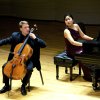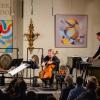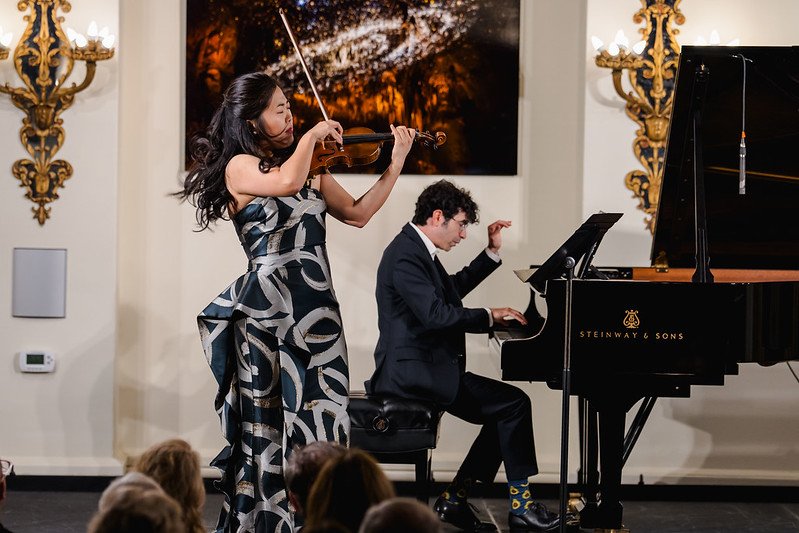
The charm of Friday’s Music@Menlo concert at Menlo School’s Stent Family Hall lay in the variety of tone colors and inflections that violinist Kristin Lee and pianist Michael Stephen Brown unleashed on their music.
The July 25 performance was the first in this year’s “Carte Blanche” series, where the programs are designed by the performers. Lee and Brown curated theirs to show off the little-known history of American music for violin and piano. In truth, the repertoire displayed a couple slices of American music: Five of the seven pieces dated from around the turn of the 20th century and its early decades. Four were written by male composers, and two by immigrants. The remaining two works were by living male composers, including Brown himself.
Within those limitations, the concert demonstrated an impressive variety of styles and techniques going on simultaneously within American music. The largest work of the evening was Ernest Bloch’s Violin Sonata No. 2, Poème mystique. The Swiss immigrant composed the 20-minute single movement in 1924 while acting as music director of the Cleveland Institute of Music. It’s a “wild ride,” in Brown’s words, through material extending from quiet, soulful expression to explosive exclamations. Some of the melodic material has Jewish inflections, reflecting Bloch’s heritage, while some parts explicitly reference Christian liturgical music. Lee and Brown pulled the varying character of this strong and interesting piece for all it was worth.
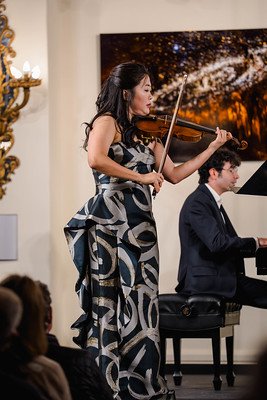
The other formal sonata on the program was the Violin Sonata No. 4 by Charles Ives, titled Children’s Day at the Camp Meeting, drawing inspiration from a Bible camp of Ives's 1880s childhood. This professionally trained but spare-time composer, who made his living running an insurance agency, wrote the piece in the 1910s. It has the quirkiness one expects of Ives: It begins with a simple jerky children’s march, but after only four bars the piano turns to outré dissonant harmonies, through which the march fights its way. The second movement, based on a hymn, featured Lee’s lyrical phrasing in a firm tone, sometimes moderating to a gentler level, while Brown played soft rolls interrupted by a wild rampaging cadenza. The brief finale is march-like but also incorporates hymn, and ends with an abrupt quizzical gesture.
The big concluding dazzler of the concert was a Fantasy on Themes from Porgy and Bess, George Gershwin’s 1930s vernacular opera. Though credited to Gershwin on the program, the piece was concocted with some originality by the Russian violinist and composer Igor Frolov, in the same spirit with which 19th-century violinists such as Pablo de Sarasate would write fantasies on tunefests like Carmen. Lee made a brilliant job out of playing jazzy melodies like “I Got Plenty O’ Nuttin” and “It Ain’t Necessarily So,” with creative display and elaborate variation salted in as smoothly as if the music had originally been written for the violin. Brown had sufficient opportunity to add cadences and accents.
Road Movies by John Adams consists of two vehemently fast movements evoking a drive on the highway, separated by a slower movement in which the car has seemingly broken down. Brown had a lot of work to do to keep the first movement going, playing a fast rumble under short phrases from Lee that were so irregularly placed they sounded accidentally improvised. For the slow movement, Brown played a heavily pedaled wash of sound while Lee turned to emphatic double-stops. She then played the third movement’s moto perpetuo with astonishing vigor.
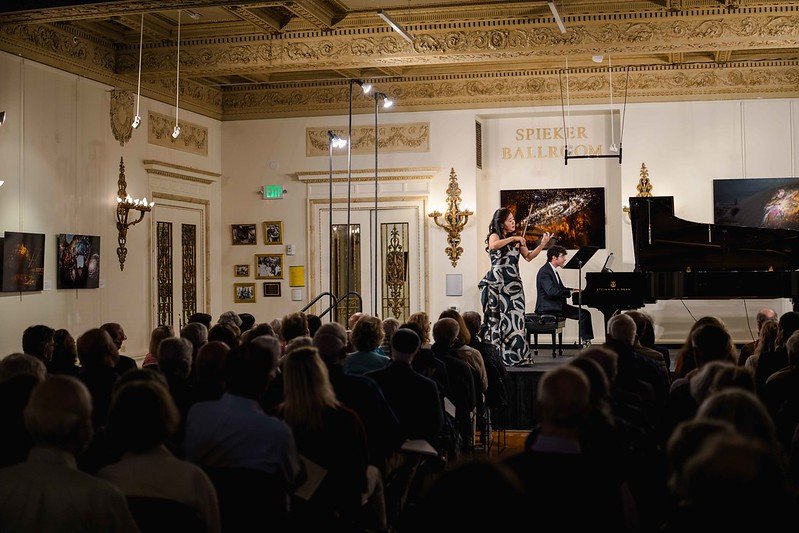
Brown’s own brief composition, titled Sigh, was inspired by Maurice Ravel’s Violin Sonata, which in turn was inspired by jazz and Gershwin, thus offering a double helping of Americanism. Like a combination of Adams’s first and second movements, this piece consisted of fragmented phrases in the violin over a gentle wash of sound in the piano. It’s a light and tentative work with an occasional buildup of intensity.
Appropriately, then, that the encore was the “Blues” movement from Ravel’s sonata, full of bent notes for Lee played with a soulful tone. It was one more chance to appreciate the masterly variety of her performance.



